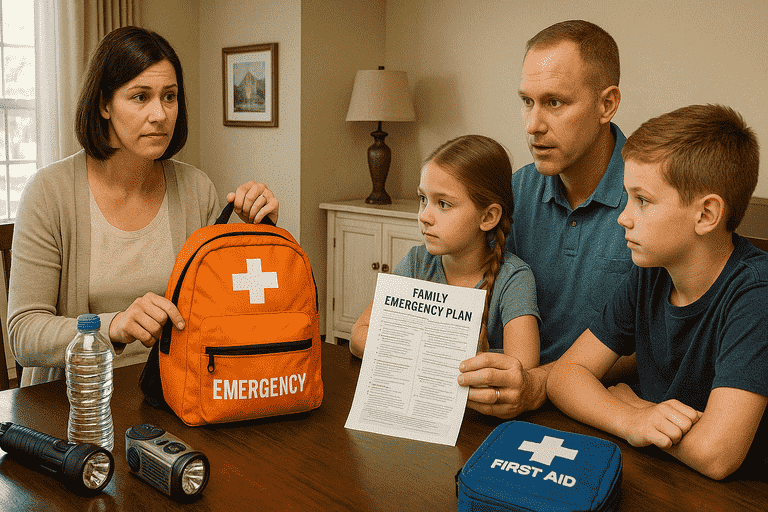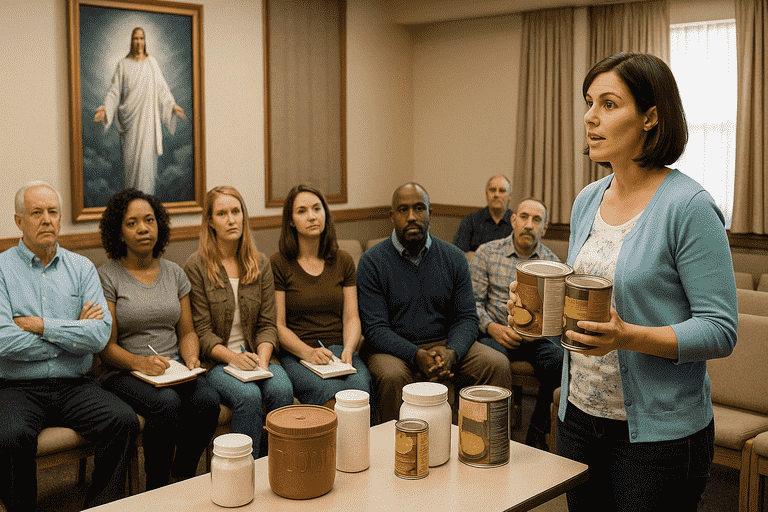For members of The Church of Jesus Christ of Latter-day Saints, preparedness is more than just a good idea—it’s a principle rooted in faith, self-reliance, and stewardship. The concept of emergency preparedness LDS has long been promoted as part of the Church’s guidance to help individuals and families become spiritually and temporally self-reliant. In a world where disasters, pandemics, and economic instability are increasingly common, this philosophy continues to provide a practical and spiritual foundation for preparedness.
Church leaders have counseled members for decades to build food storage, stay out of debt, and be prepared to care for themselves and others during emergencies. As preparedness becomes a global concern, many outside the LDS community are now looking to their model as a trusted example of what long-term readiness can look like.
Emergency Preparedness LDS: A Faith-Based Guide
LDS emergency preparedness begins with a mindset of faith, wisdom, and action. Preparedness is not just about storing food—it’s about preparing spiritually, emotionally, physically, and financially. The principles that shape emergency preparedness LDS approaches include:
- Self-reliance: Relying on your own resources first before seeking outside help
- Family preparedness: Teaching and involving all members of the household
- Community service: Being ready to help neighbors and serve in times of crisis
- Spiritual preparation: Relying on faith during trials and seeking divine guidance
These core beliefs transform preparedness from a fear-based reaction to a proactive and hopeful life strategy.

Food Storage as a Foundation of Emergency Preparedness LDS Families Prioritize
Perhaps the most widely recognized practice among LDS families is long-term food storage. Church leaders have long advised members to store at least three months’ worth of food, and if possible, a year’s supply of essentials like grains, legumes, salt, and water. This level of preparation has helped thousands of families during financial hardship, natural disasters, or health emergencies.
LDS home storage centers across the United States and Canada provide affordable access to bulk goods. Families are taught how to rotate, organize, and preserve food effectively. This form of emergency preparation emphasizes both practicality and discipline.
Building Emergency Kits in the Spirit of Emergency Preparedness LDS Teaching
Another vital component of preparedness within LDS communities is having 72-hour kits (also called grab-and-go bags). These kits typically include:
- Three days’ worth of food and water
- A change of clothing
- Basic hygiene supplies
- Copies of personal documents
- Flashlight, batteries, and communication tools
- First aid kit and medications
The idea is simple: in case of sudden evacuation, LDS families can be ready in minutes. Regular family home evenings often include reviewing or updating these kits, making the process part of both physical preparation and spiritual bonding.
Financial Readiness as an Often Overlooked Element of Emergency Preparedness LDS Believers Practice
Beyond food and gear, financial preparedness is a key pillar in emergency preparedness LDS culture. Church members are counseled to avoid debt, save money, and live within their means. This not only provides peace of mind but also builds resilience during economic downturns or job loss.
Many LDS families create household budgets, maintain emergency savings accounts, and teach financial literacy to their children. The principle of “provident living” supports a balanced lifestyle that anticipates challenges without fear.

Community Resilience and Emergency Preparedness LDS Ward Structure Supports
One of the most powerful features of LDS preparedness is the organization of local Church units, known as wards and stakes. These structures help support families in emergencies through coordinated communication, assigned responsibilities, and leadership.
For example:
- Ward emergency coordinators help assess risks and organize response plans
- Members are often grouped into small clusters to check on one another
- Communication trees ensure fast and accurate information sharing
- Priesthood and Relief Society leaders provide spiritual and temporal support
This network strengthens both the individual and the community, aligning preparedness with spiritual care and service.
Teaching Youth About Emergency Preparedness LDS Families Lead by Example
Preparing the next generation is part of the long-term plan. LDS parents and leaders actively teach children and youth about self-reliance through activities like:
- Camping and outdoor survival experiences
- Service projects that include assembling kits or food drives
- Family home evenings focused on preparedness topics
- Gospel discussions on the importance of temporal and spiritual balance
By normalizing preparedness from a young age, LDS families foster lifelong habits of readiness, faith, and service.
Technology and Modern Tools in Emergency Preparedness LDS Members Use
While the principles remain timeless, modern LDS families also use up-to-date tools and platforms to support their emergency efforts:
- Mobile apps for emergency alerts and family communication
- Digital food storage calculators to plan supply needs
- Online budgeting tools to manage finances
- Cloud backups for essential documents and photos
The Church’s official website offers downloadable checklists and planning guides tailored to individual and family needs, helping members bridge traditional wisdom with modern efficiency.

Challenges Facing Emergency Preparedness LDS Communities Today
Like all communities, LDS families face evolving challenges in staying prepared:
- Urban living can limit space for food storage or water reserves
- Rising costs of food and supplies can make stocking up difficult
- Information overload can lead to confusion or paralysis
- Generational gaps in knowledge transfer may affect younger members
Despite these barriers, the underlying values of emergency preparedness LDS culture remain strong. Faith, family, and service continue to inspire solutions and innovation.
Final Thoughts on Emergency Preparedness LDS As a Model of Resilient Living
Emergency preparedness within LDS culture is more than a response plan—it’s a lifestyle rooted in faith, wisdom, and love for others. From building food storage and maintaining 72-hour kits, to preparing financially and supporting community structures, the emergency preparedness LDS model blends practical action with spiritual purpose.
As global challenges increase in scale and frequency, individuals from all backgrounds can learn from this balanced and proactive approach. Preparedness doesn’t eliminate trials, but it empowers people to face them with strength, clarity, and compassion.

